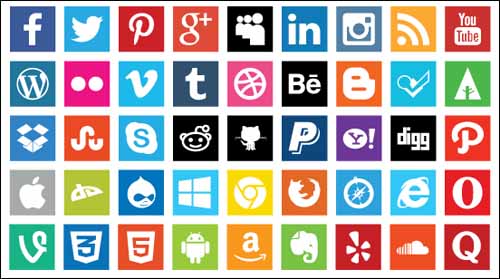OK, give up? What is a FLIT? Just a shorthand way of describing Facebook, LinkedIn, Twitter and other social media.
Businesses didn’t exactly like FLITs until just recently. They used firewalls to block them from the employees computers. The C-level execs didn’t want employees wasting their time during business hours. CIOs flew their “security” flags. But the light bulbs went on in the Executive Suite. “Maybe we can leverage the social networks for our financial gain”. They saw value in tweeting out company news, linking up with outsiders who can help us, gathering supporters around a Facebook page.
So now what exactly is Enterprise Social Media??? Simply, it is a using the social platforms (the FLITs) for workplace networking and collaboration. It’s “coming out party” was Enterprise 2.0.
Enterprise 2.0 is the strategic integration of Web 2.0 technologies into an enterprise’s intranet, extranet and business processes. Enterprise 2.0 implementations generally use a combination of social software and collaborative technologies like blogs, RSS, social bookmarking, social networking and wikis. Most enterprise 2.0 technologies, whether homegrown, free or purchased, emphasize employee, partner and consumer collaboration. Such technologies may be in-house or Web-based. Companies using YouTube for vlogging or a private Facebook group as a modified intranet, for instance, are implementing a form of Enterprise 2.0.
So what does all this translate to? (1) use of social media tools to market the business and its products to customers; (2) promote employee collaboration, productivity and innovation; (3) hook up social media tools into enterprise collaboration platforms in order to integrate social media into the regular workday experience.
Businesses are seeing challenges because now the customer has a voice too. They get to comment on the company, the products, service levels, supply chains, employees. So giving a voice to people who did not have one before may change the whole way we work.
Now how does all this relate to the Supply Chain? If social media is strong enough to tighten the bonds between brands and consumers, can’t it firm up each link in the supply chain? As a start, access to real-time data can help supply chains run ultra lean because proper analysis can lead to producing just enough product to meet consumer demand.
Social media can be used within the “extended supply chain” of the procurement, logistics, fulfilment and manufacturing teams. Whether these roles are in house or outsourced social media can help to break down silos of these functions to get people connecting. One example might be to film a video on packing a skid and showing it to all the extended companies logistics operations. Then each operation can critique to maybe find a better way. Bringing the supply chain teams together through social media is the greatest way to stimuate innovation in the supply chain.
Another great idea for social media is to search members to find a subject knowledge expert. This is used extensively by General Electric with their internal social media tool COLAB. Users have created over 50,000 communities with over 100,000 experts signed up to answer questions and manage information. Everything is behind the firewall except for ‘pinholes’ to external destinations which allow external vendors, suppliers and customers to collaborate on specific projects. There are 30,000 external users who come in through the firewall pinholes to participate in specific communities. The system is so large that GE have their own internal cloud,
Other tools like SharePoint offer a Facebook-like profile page. It is helps users find the right experts in the company and even share documents with them.
Some references where you can find more:
Social Media in the Enterprise













